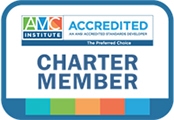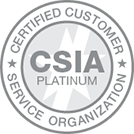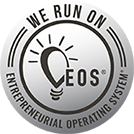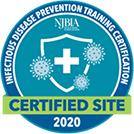By Jamin Clubb, Director of Client Technology Services at Association Headquarters
This is the second article in a series designed to help associations and nonprofits better understand and apply AI. Stay tuned for the next installment.
Artificial intelligence (AI) has moved quickly from a novelty to a necessity. The buzz is everywhere, but success with AI doesn’t come from buying the newest tool on the expo floor; it comes from preparation.
Before associations can meaningfully adopt AI, they need to build a foundation of readiness. Without it, even the best technology will fall flat and investments can be wasted.
With AI for Nonprofits, Readiness is Non-Negotiable
The temptation is to move fast. Vendors may make it sound simple: plug in a tool, and results will follow. However, AI isn’t magic. It's a capability that needs direction, context, and governance.
When organizations skip the readiness step, they risk:
- Investing in tools that don’t solve real problems or advance the mission.
- Creating confusion and inconsistency in how AI is used across the organization.
- Overlooking risks tied to data privacy, compliance, and acceptable use.
- Missing out on opportunities to build staff confidence and necessary skills.
Readiness protects against wasted investment. More importantly, it positions associations to adopt AI in ways that truly advance mission and member value.
The Four Pillars of AI Readiness for Nonprofits
Building readiness doesn’t require a full transformation overnight. It does mean focusing on four key areas:
1. Leadership Alignment
AI projects need clear goals. Leadership should be aligned on where AI fits, what outcomes matter, and what risks the organization is willing to take. Alignment creates guardrails so pilots don’t drift into experiments without a clear purpose.
2. Staff Literacy
AI is no longer the domain of IT alone. Everyone should understand what AI can and cannot do. Literacy builds confidence, reduces reliance on vendors, and sparks new ideas when staff see how AI applies to their own work.
3. Data Confidence
AI depends on data, and associations handle sensitive information. Without clear policies on privacy, compliance, and acceptable use, risks multiply. Establishing governance, what data can be used, what stays off-limits, and how results are reviewed, is non-negotiable.
4. Strategic Fit
AI for nonprofits isn’t just a standalone tool. You need a strategy. Every pilot or investment should connect directly to organizational goals. Whether you are improving renewals, streamlining events, or enhancing member engagement, projects should have a clear line back to the association’s mission.
Practical First Steps to Build Your Foundation
Building readiness doesn't have to be complicated. Start with a few small, practical moves:
|
|
|
|
|
|
|
|
|
|
|
|
|
|
|
These actions set the tone that AI isn’t something mysterious; it’s a capability the organization can learn and apply thoughtfully.
The Bottom Line on AI
Associations don’t need to wait for vendors to hand them a roadmap. With the right foundation of alignment, literacy, data confidence, and strategy, they can chart their own AI path. Readiness ensures that AI adoption isn't rushed or reactionary, but intentional, aligned, and sustainable.
Strong preparation today sets the stage for real impact tomorrow.



